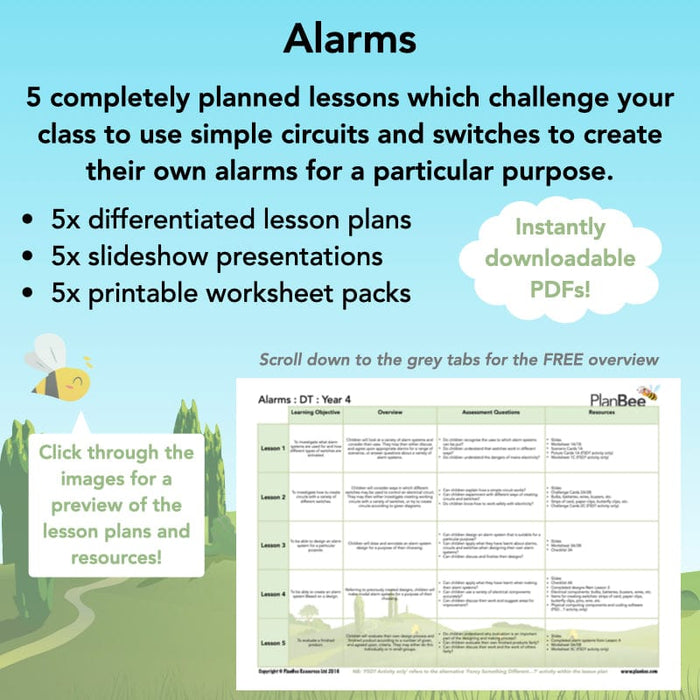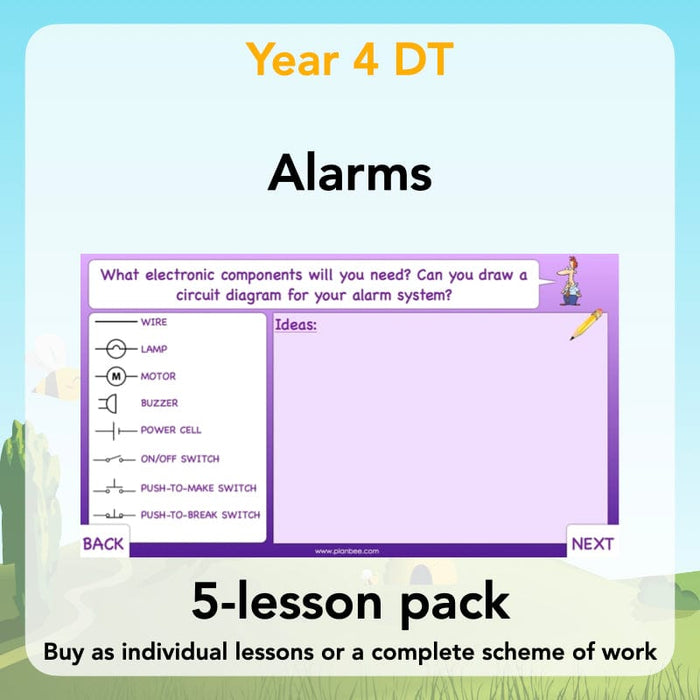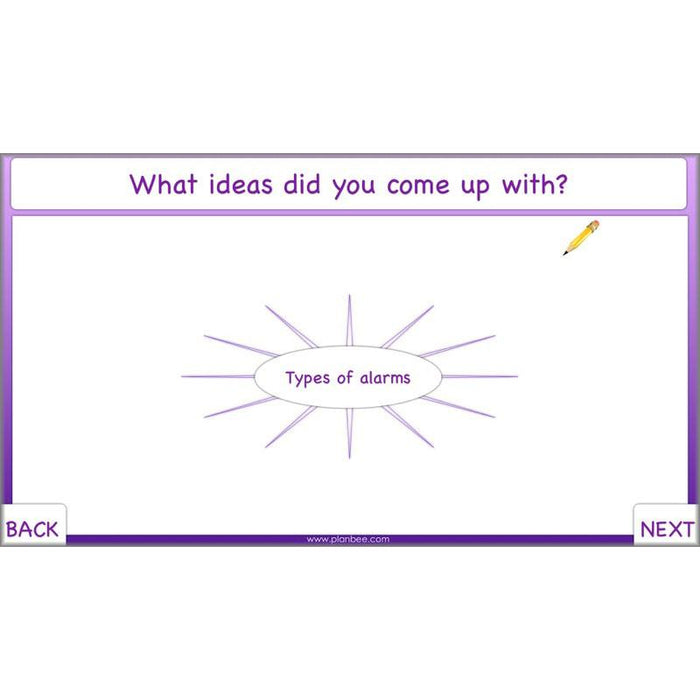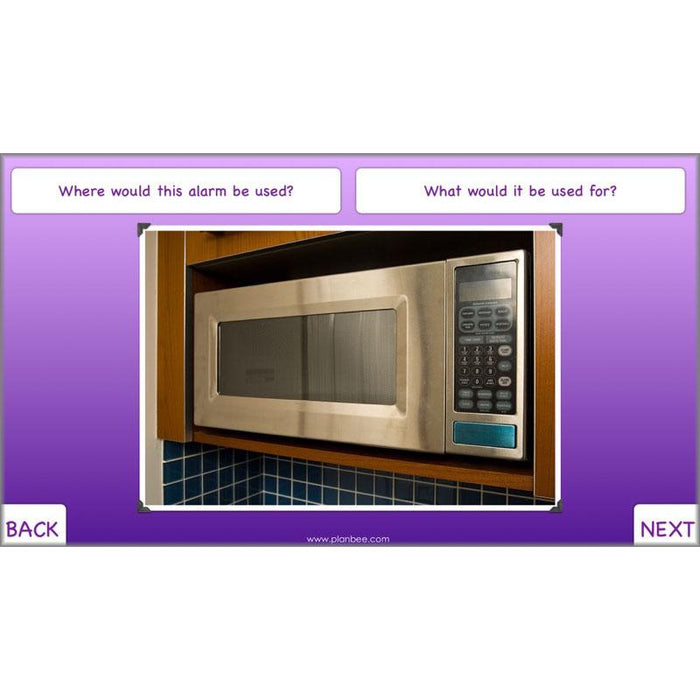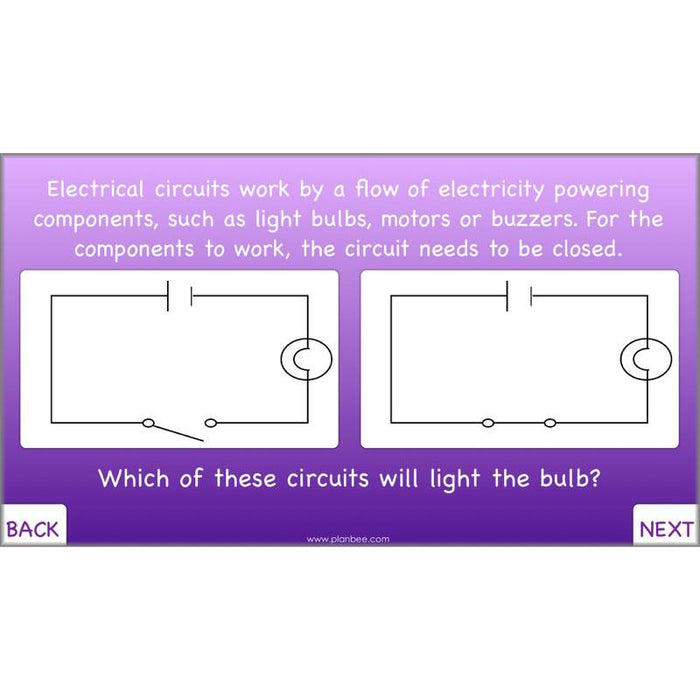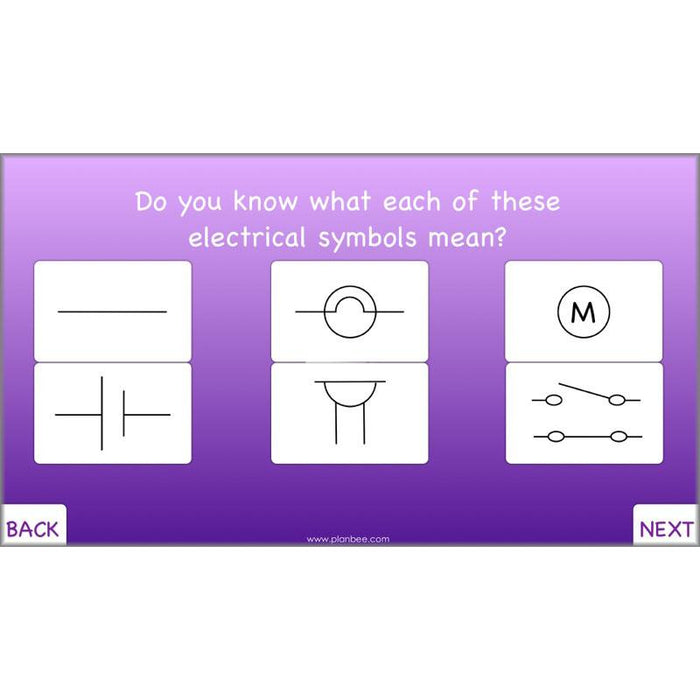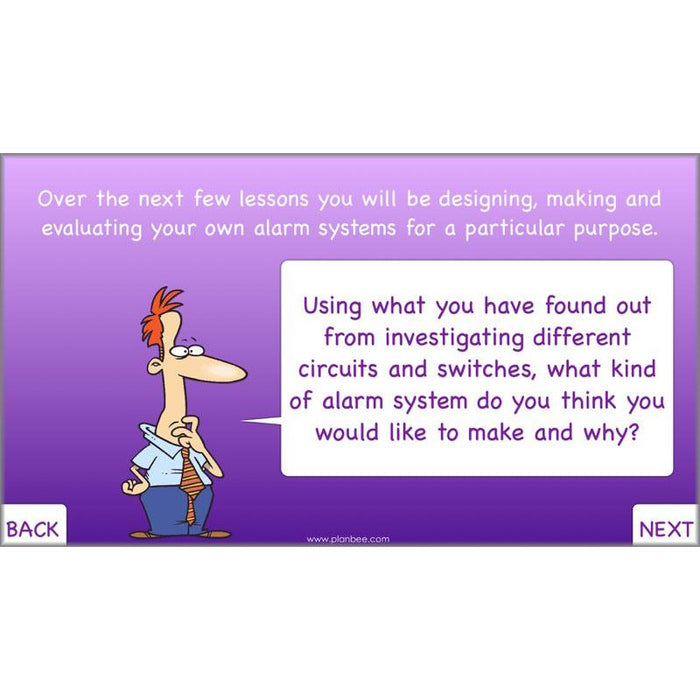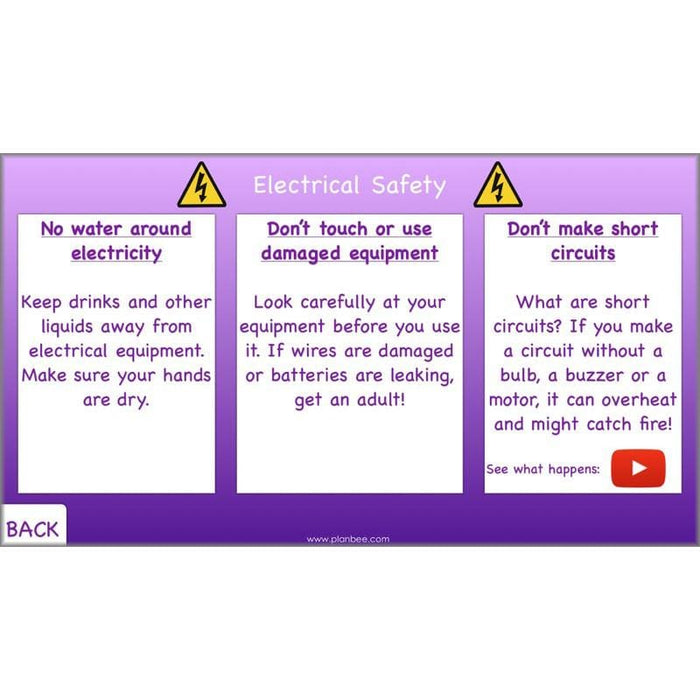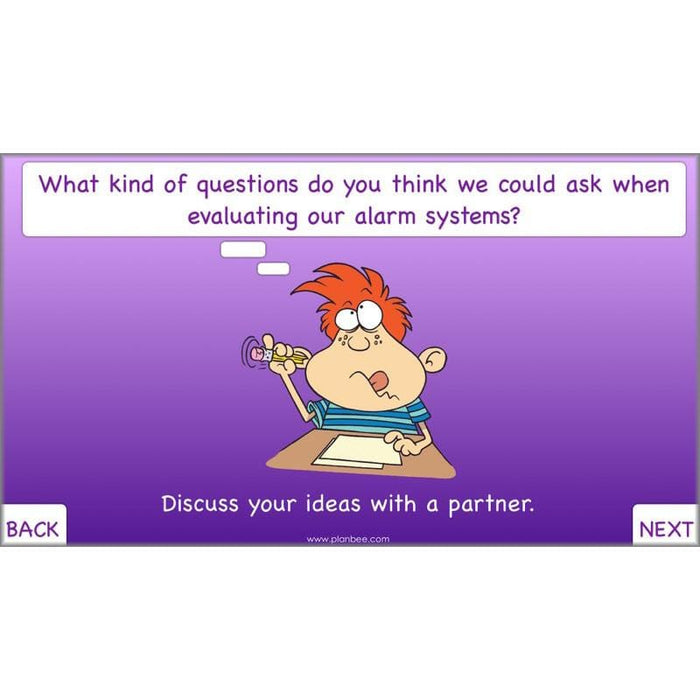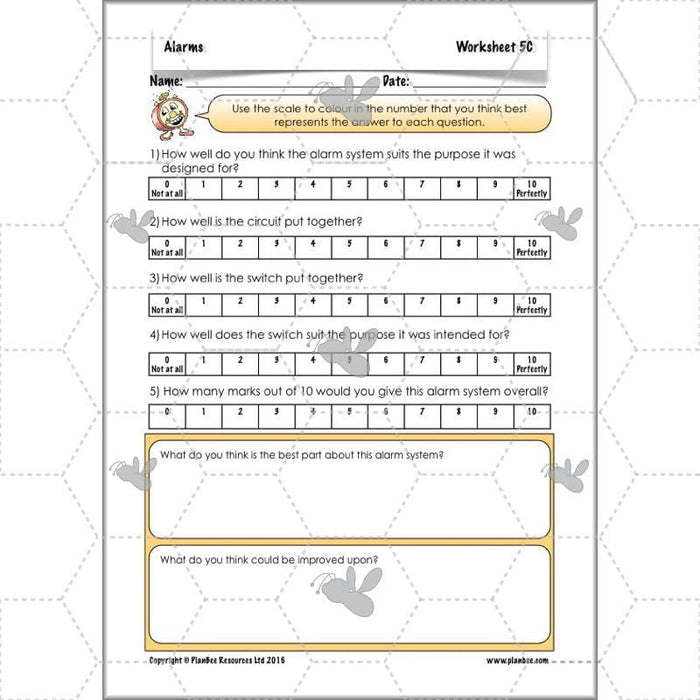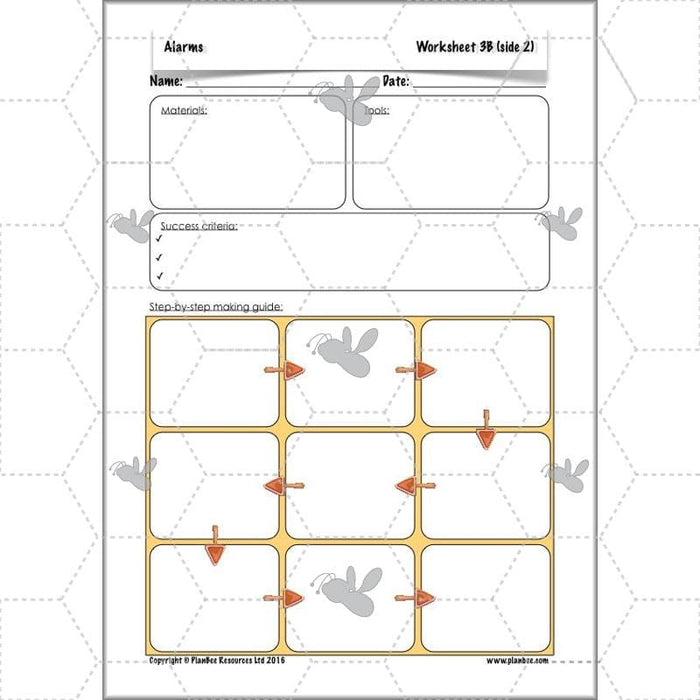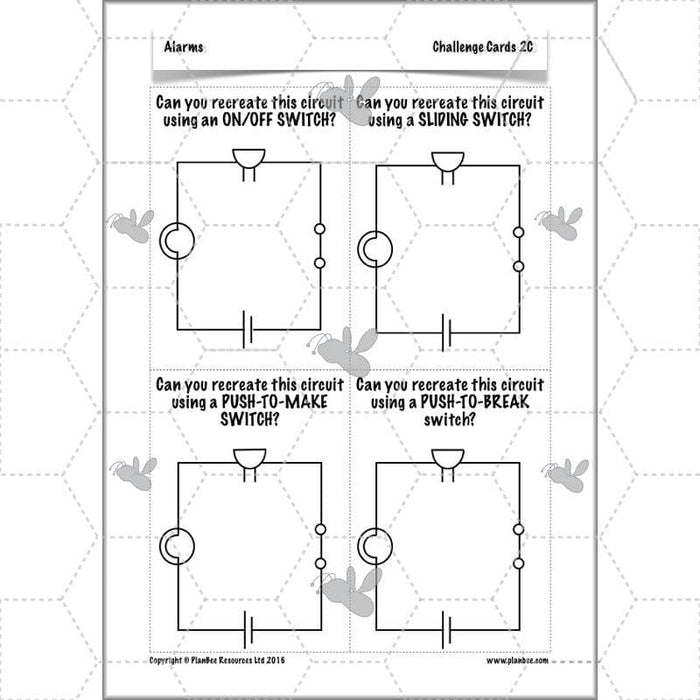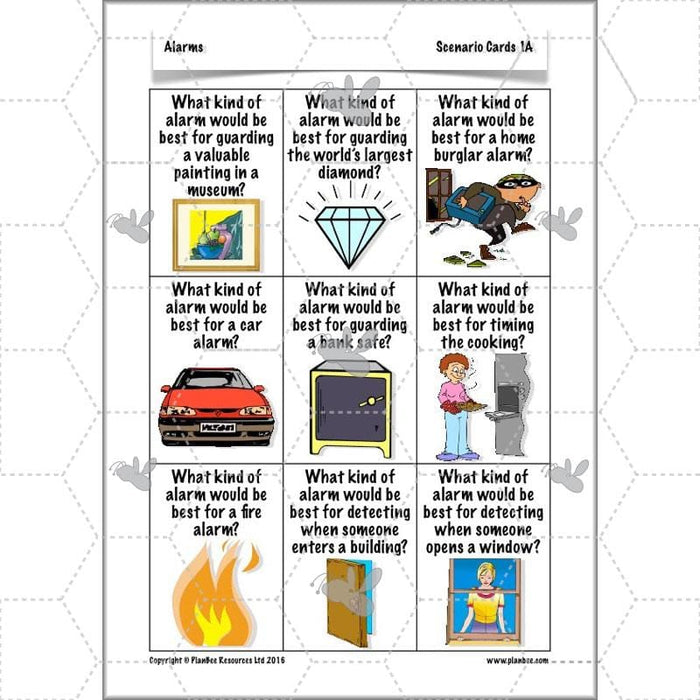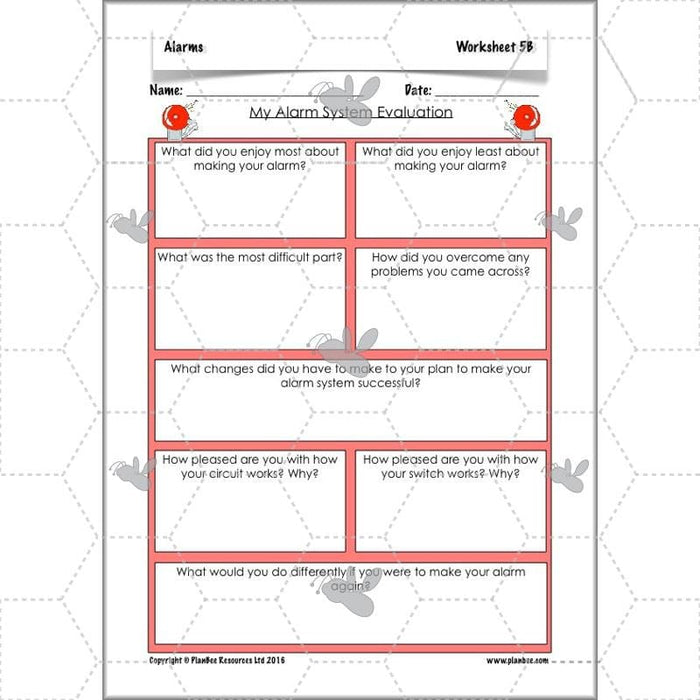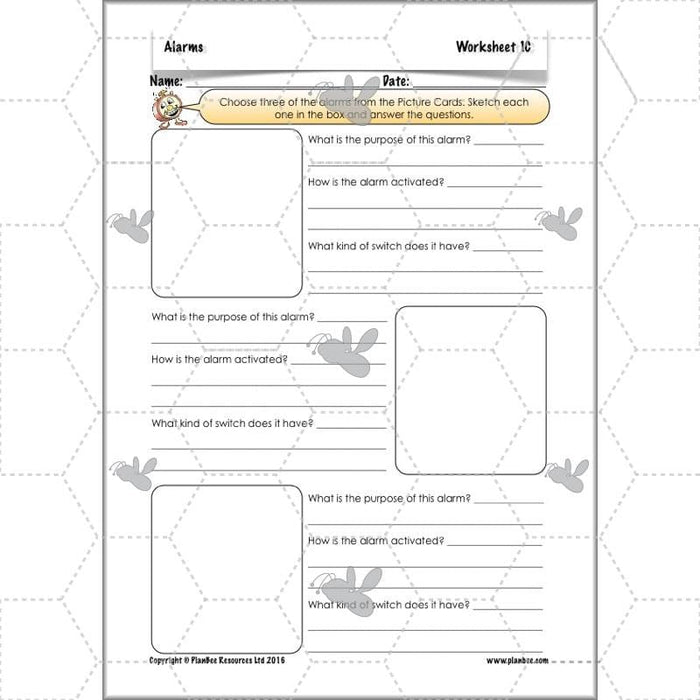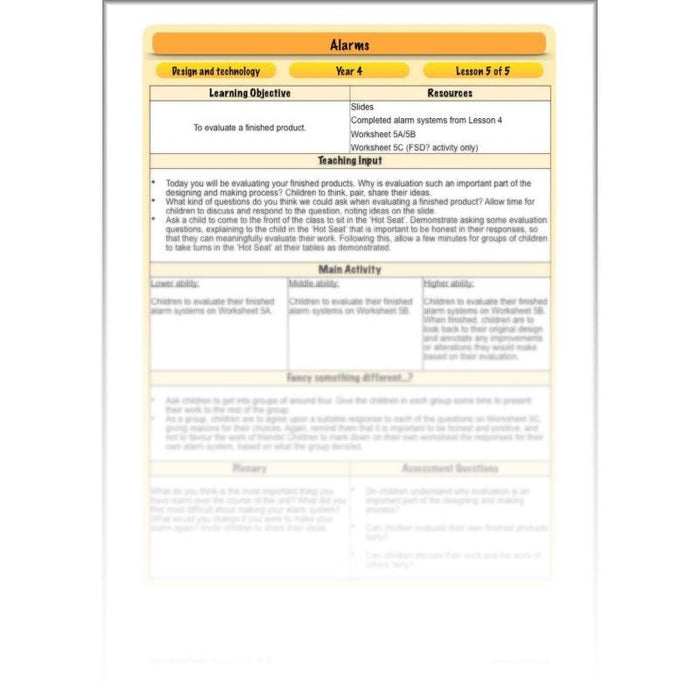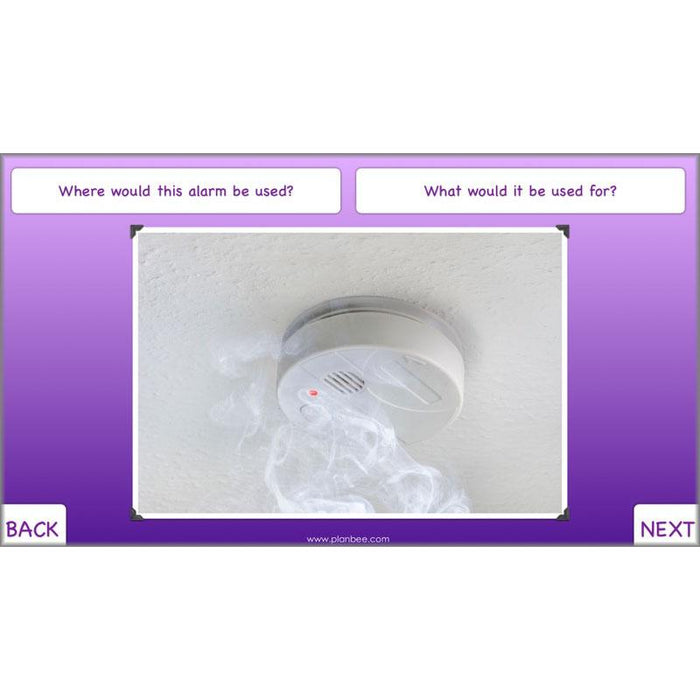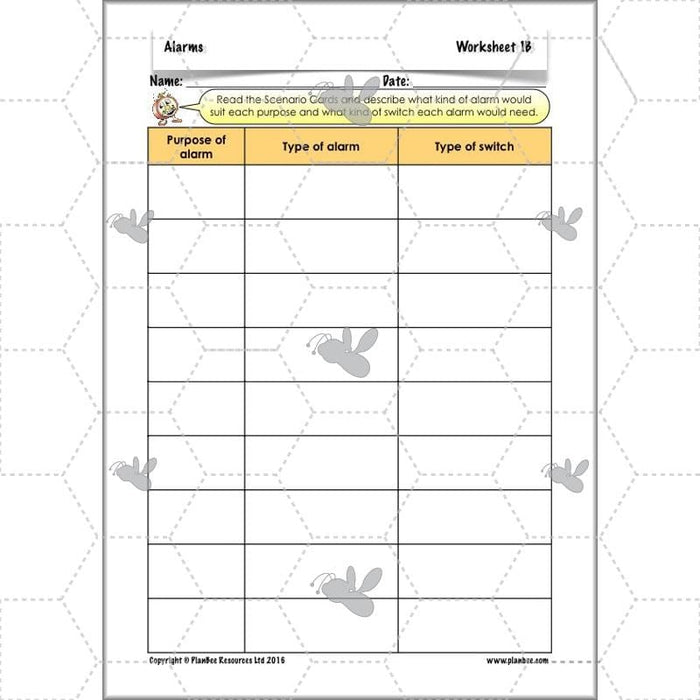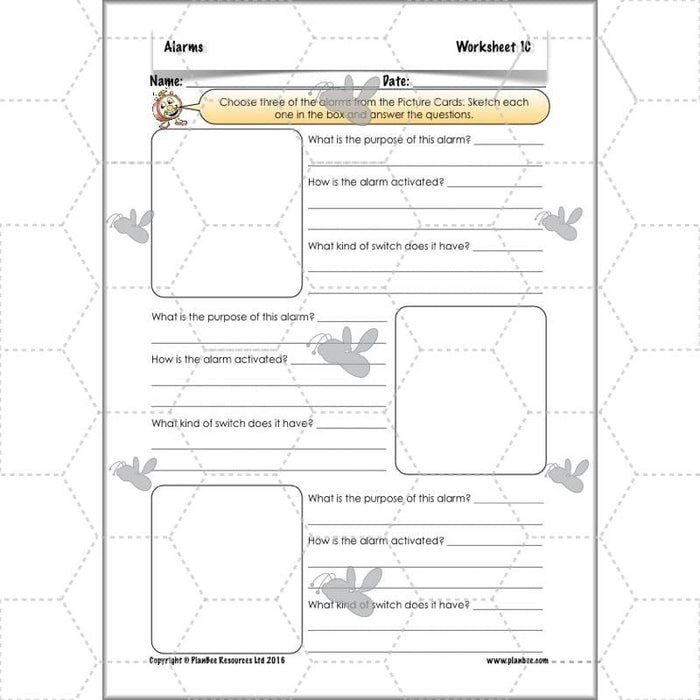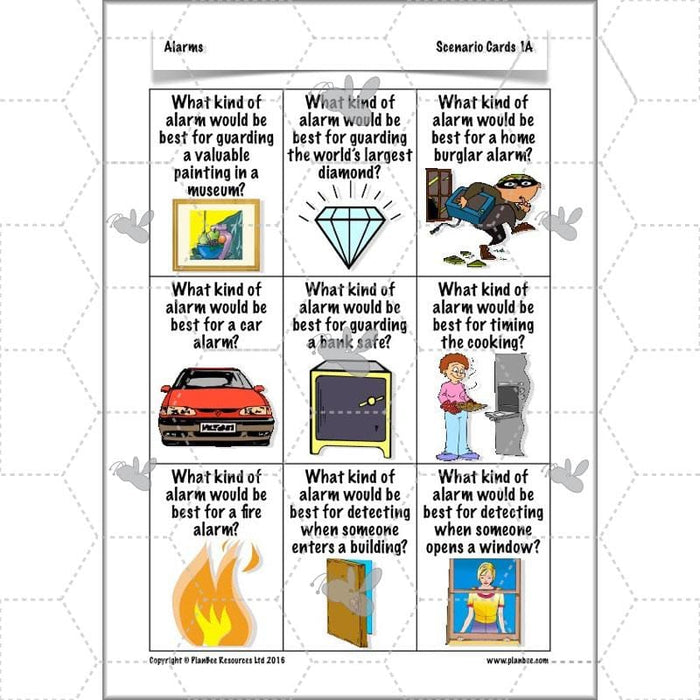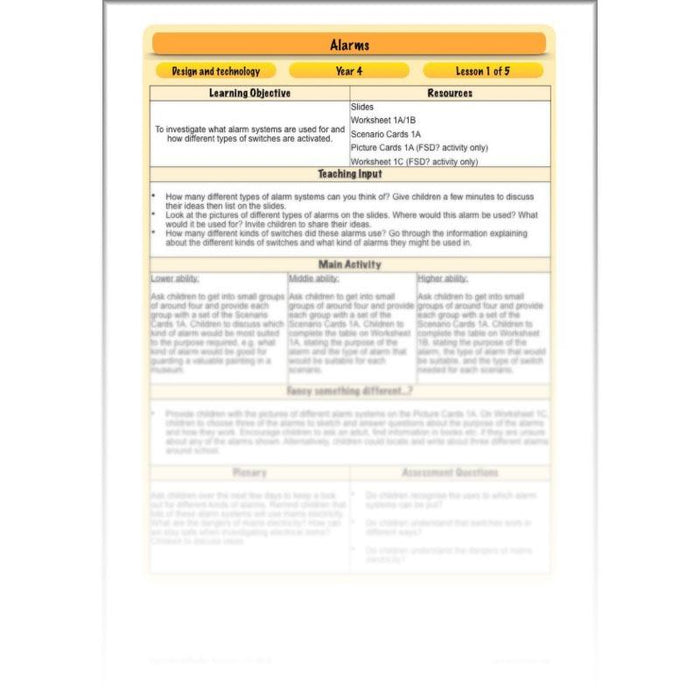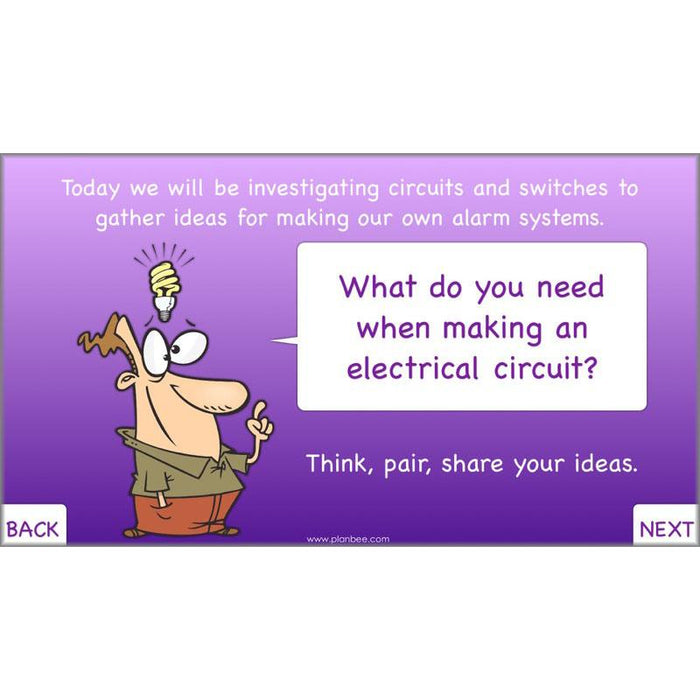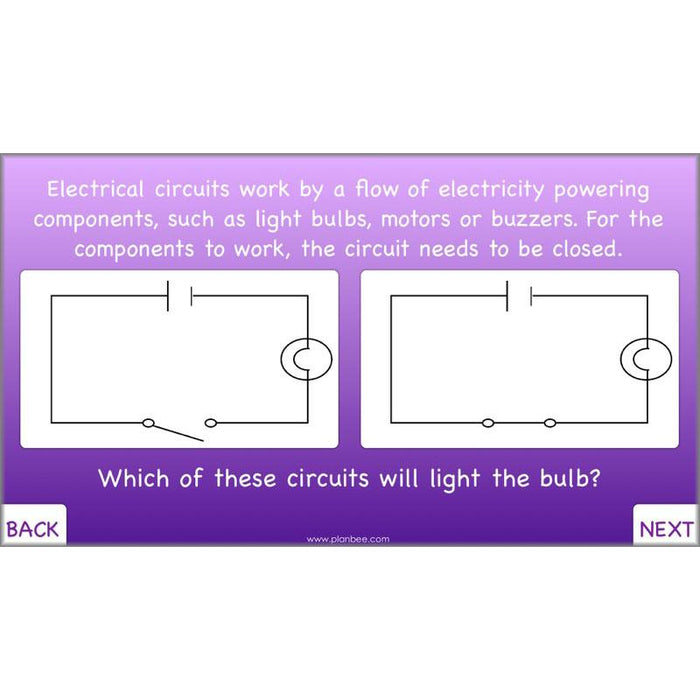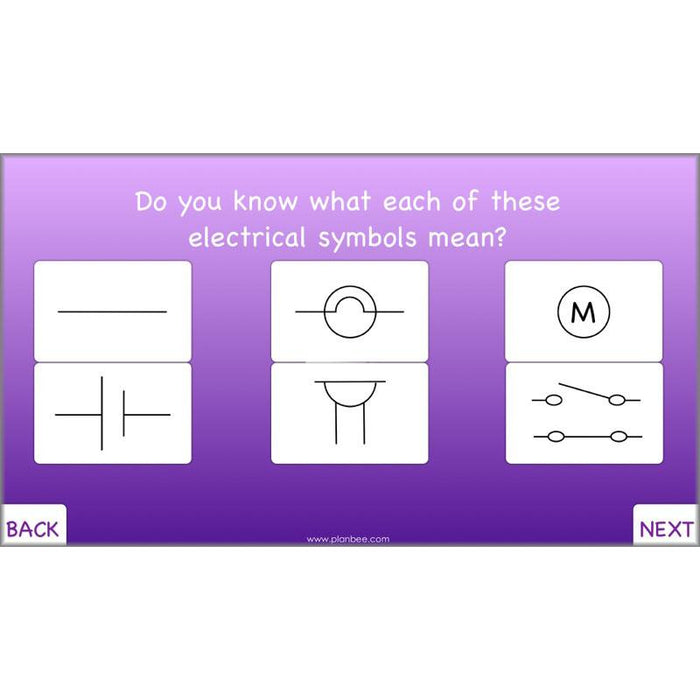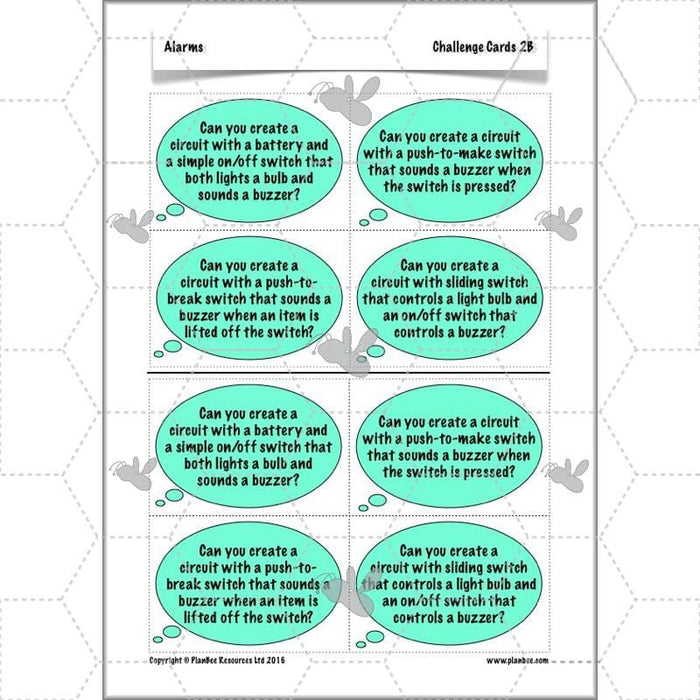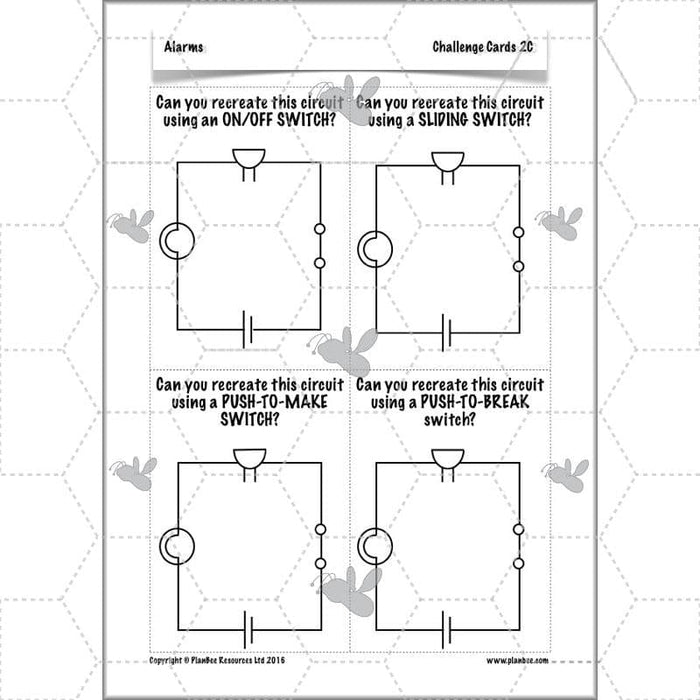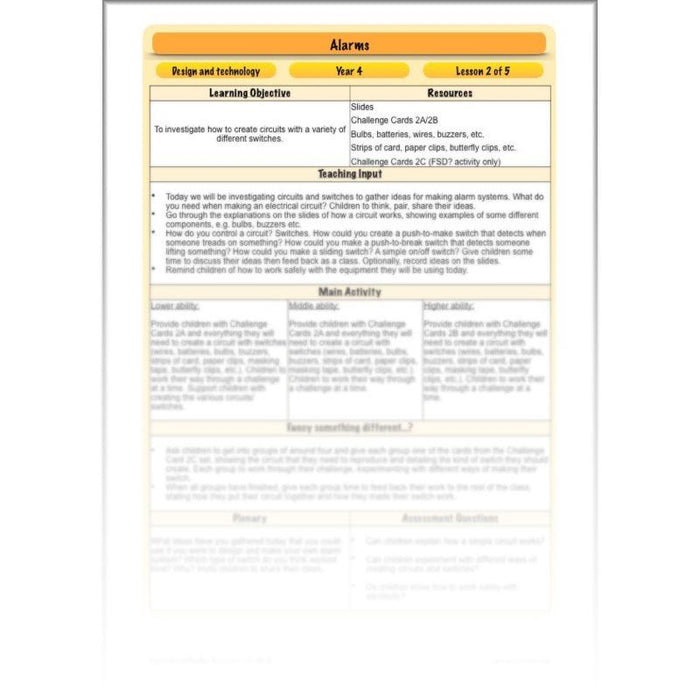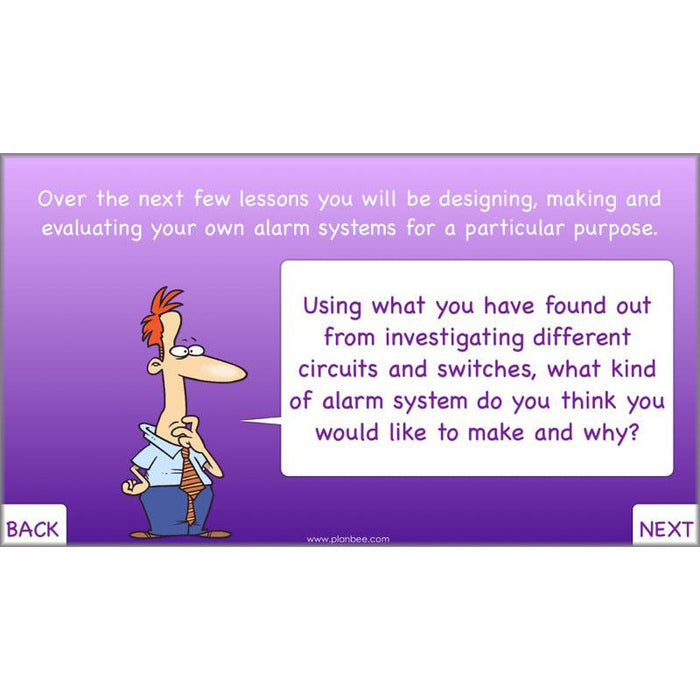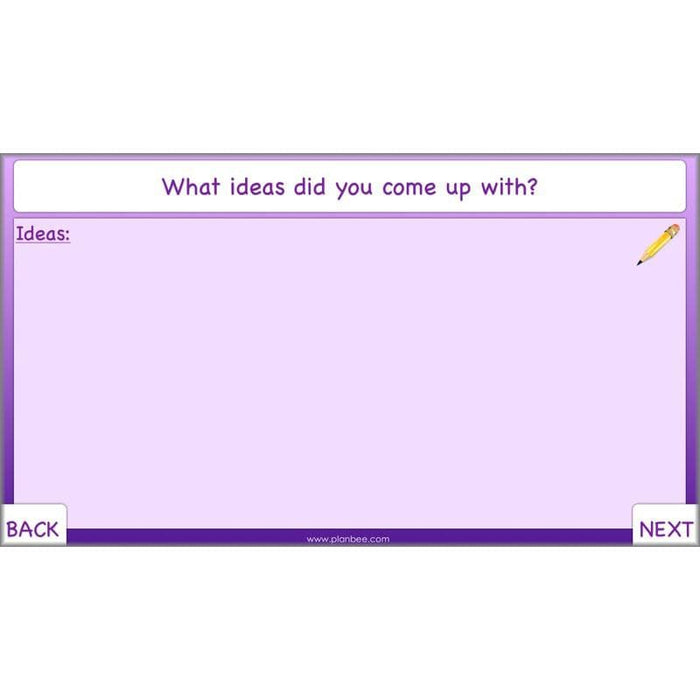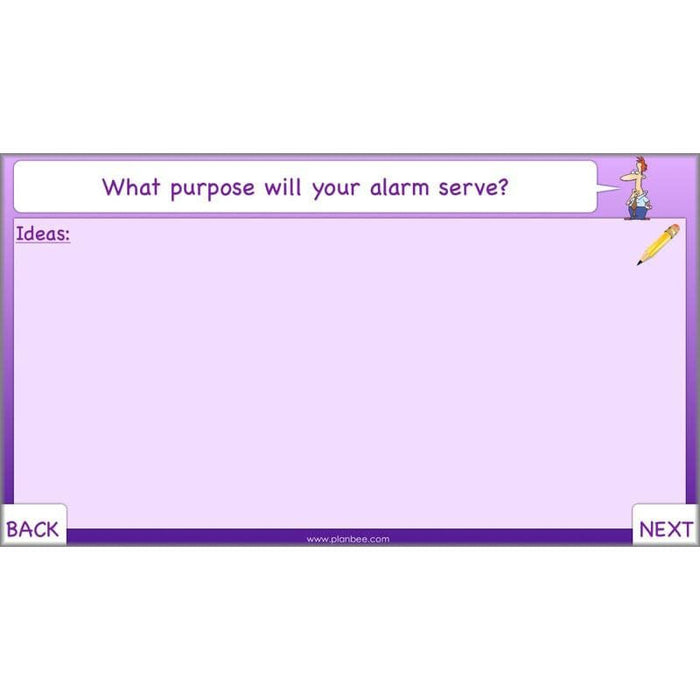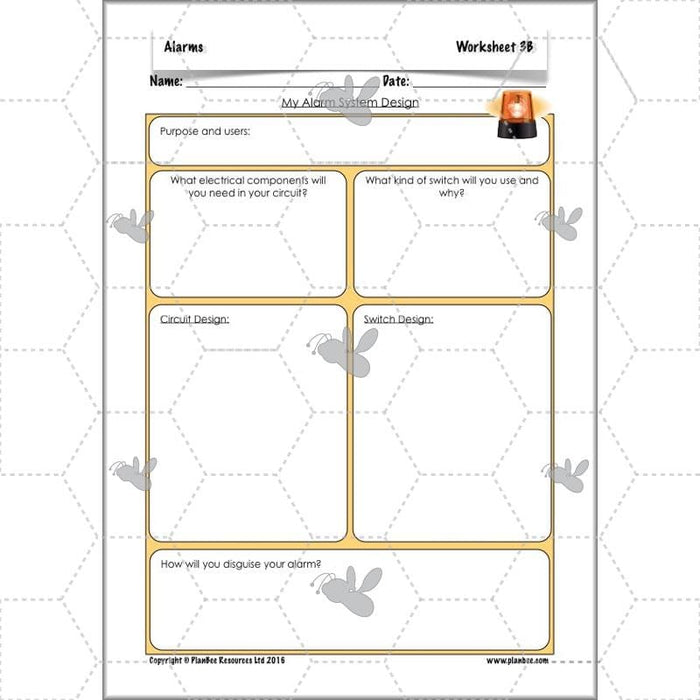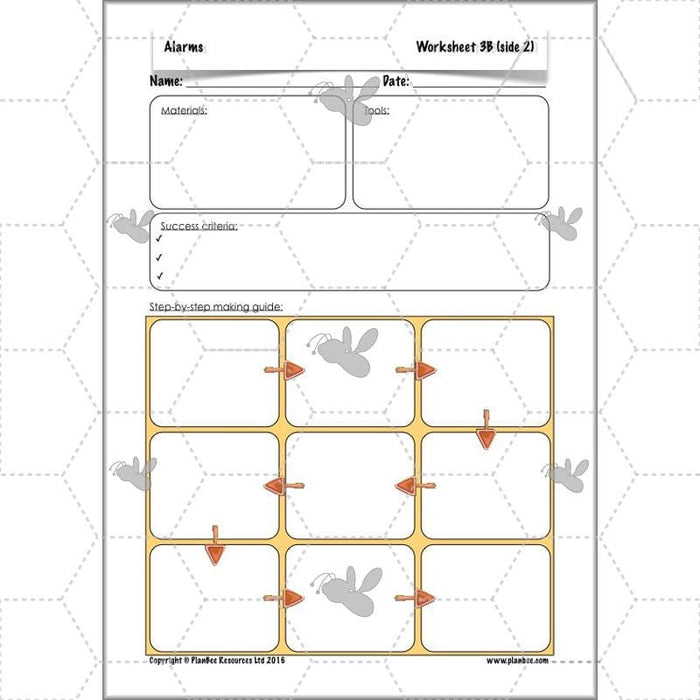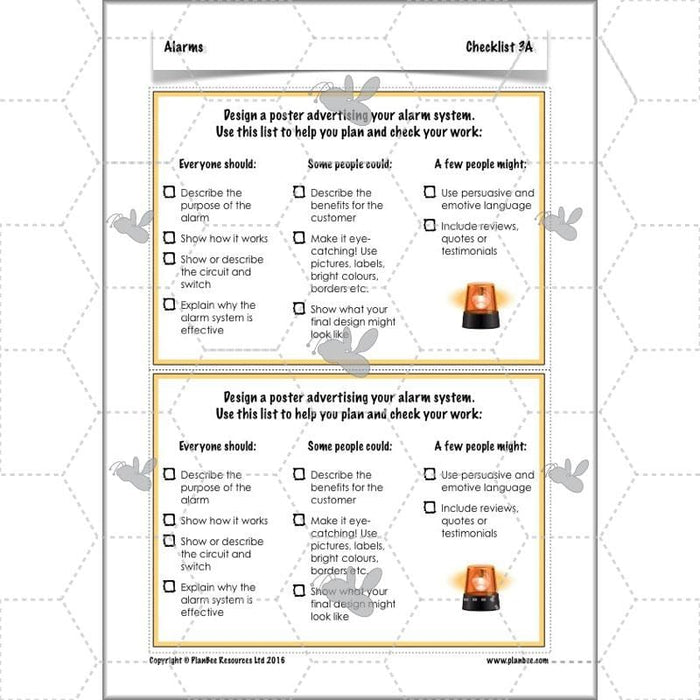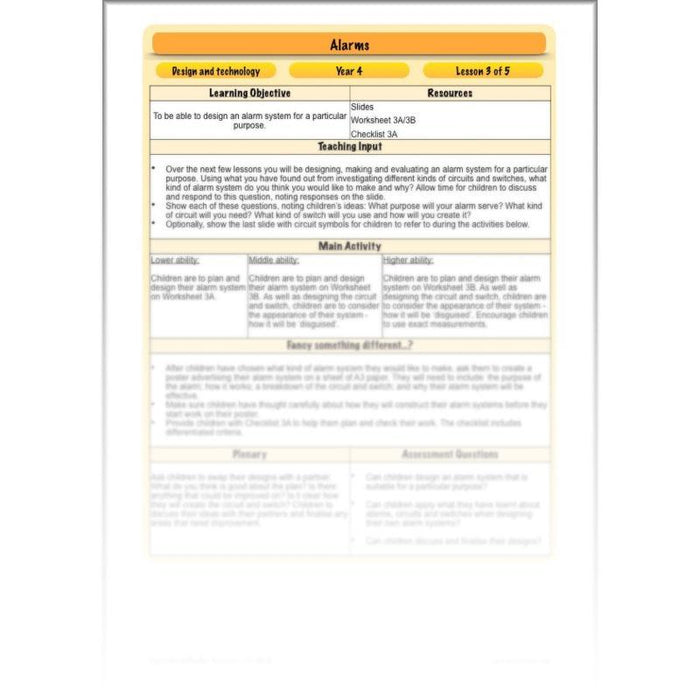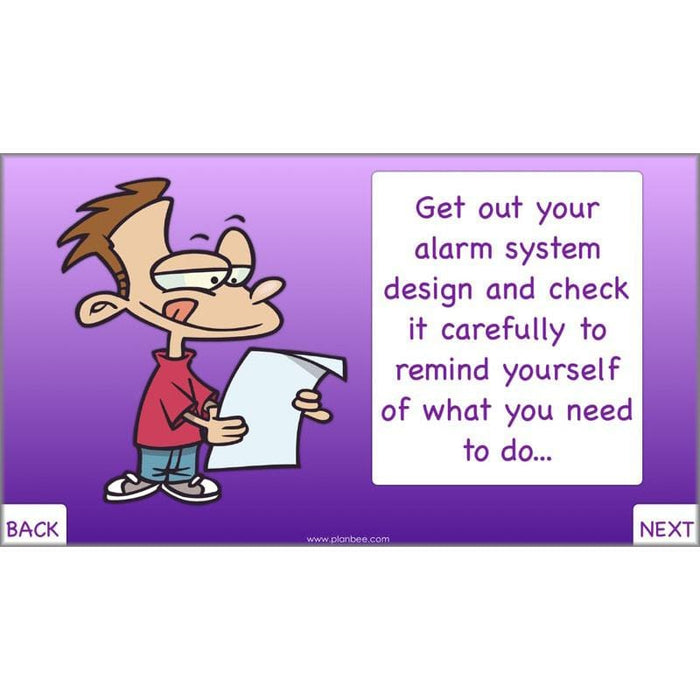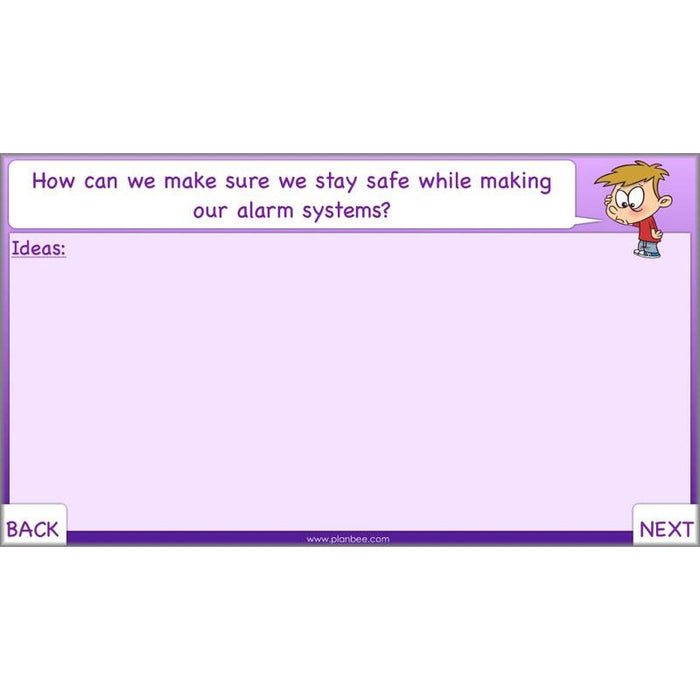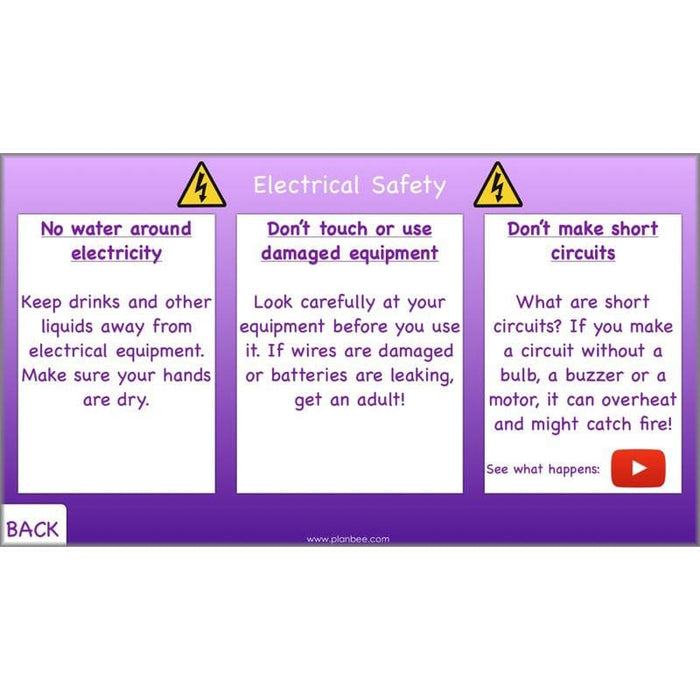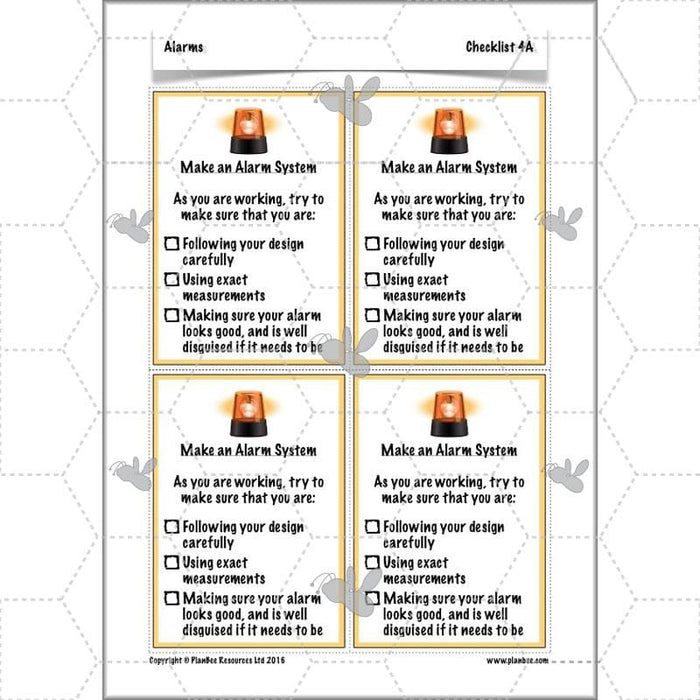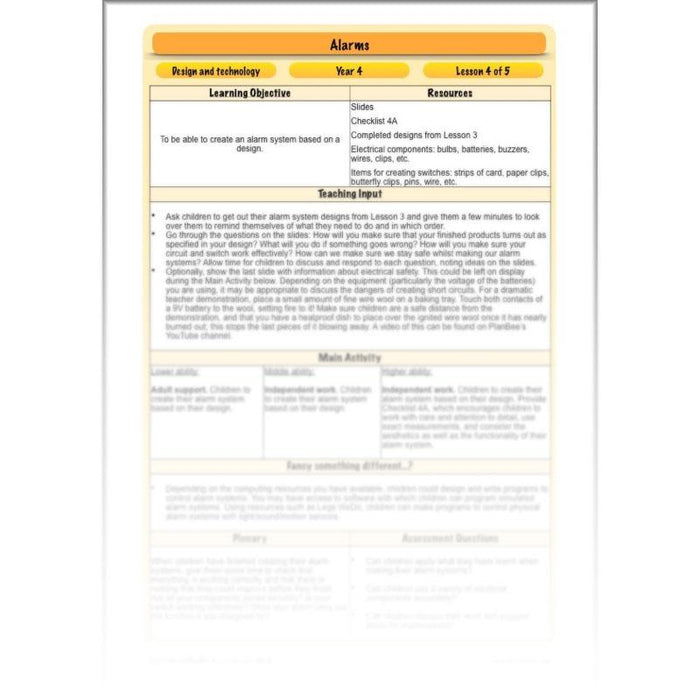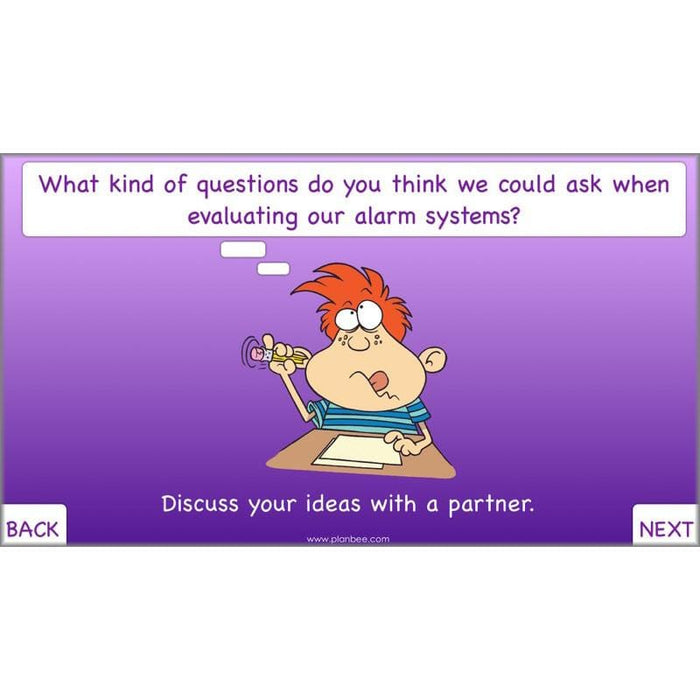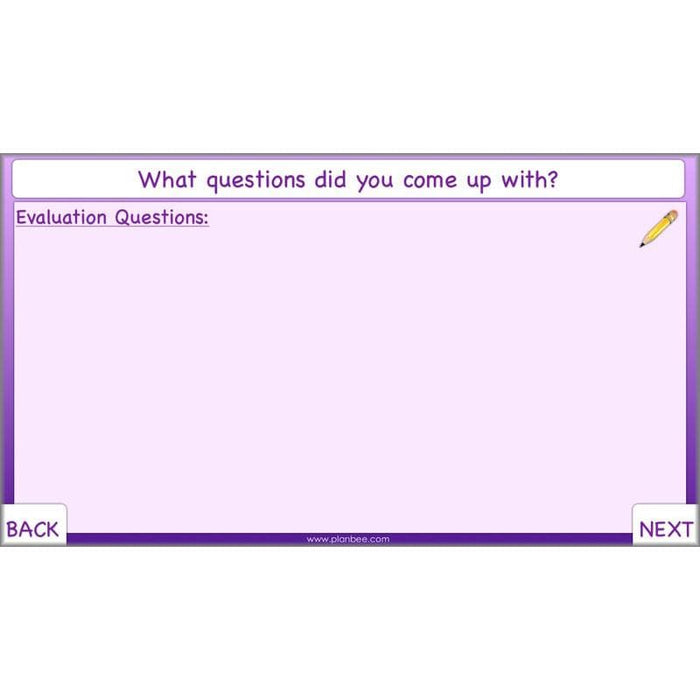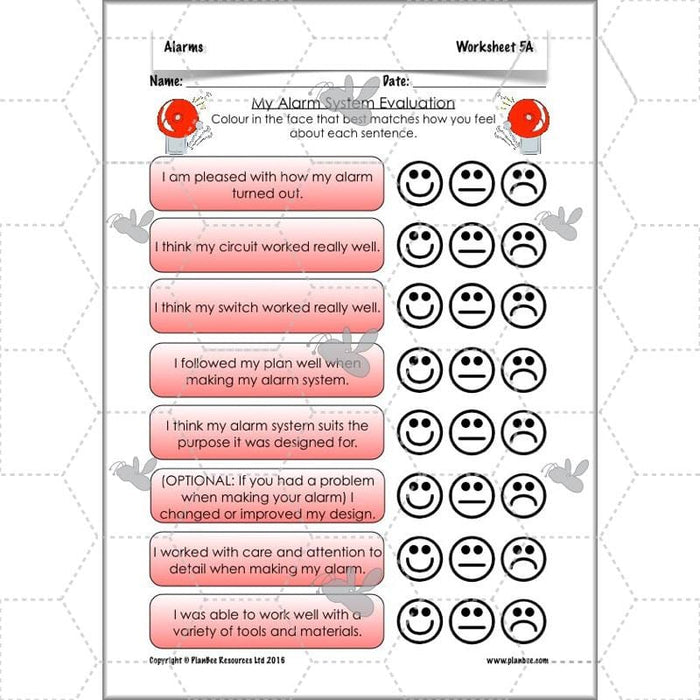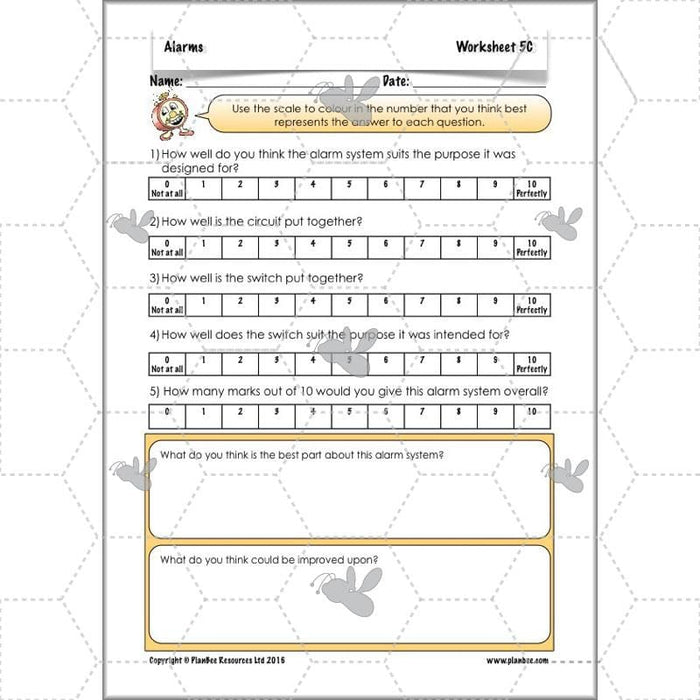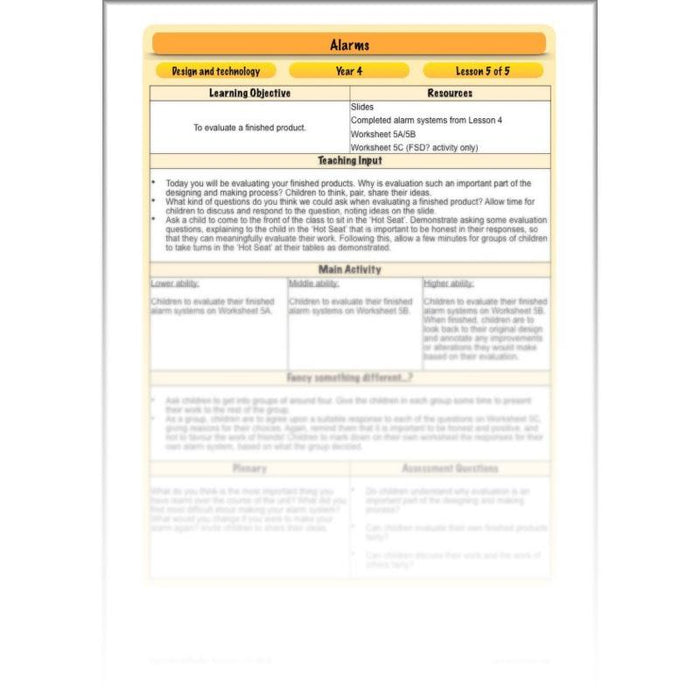#TheCompleteSeries5lessons
With lesson plans, slides, activity ideas, differentiated worksheets, Picture Cards, Challenge Cards and more, these 'Alarms' lessons will make your DT teaching alarmingly simple!
#Lesson1SystemsSwitches
The first lesson in this series gets your class thinking about how many different kinds of alarm systems there are and what they are used for before going on to study different kinds of switches, such as tilt, push-to-make and push-to-break switches.
What's included:
- Lesson plan
- Slides
- Activity ideas
- Differentiated worksheets
- Scenario cards
- Picture cards
- Worksheet
#Lesson2Switched
This practical lesson challenges your class to investigate ways of making a variety of different switches, as well as allowing them to become more familiar with the various components of a circuit to gather ideas for use in their own alarm circuits and switches.
What's included:
- Lesson plan
- Slides
- Activity ideas
- Challenge cards
#Lesson3Designs
Using what they have learnt about circuits and switches, this lesson gives your class the chance to design and plan their own alarm systems for a particular purpose.
What's included:
- Lesson plan
- Slides
- Activity ideas
- Differentiated worksheets
- Checklist
#Lesson4Buzzzzz
Let your class loose with wires, batteries and buzzers as they create their very own alarm systems based on their designs.
What's included:
- Lesson plan
- Slides
- Activity ideas
- Checklist
#Lesson5Evaluation
The final lesson in this series provides a variety of different opportunities for your class to evaluate their finished alarm systems and discuss and comment on the work of others.
What's included:
- Lesson plan
- Slides
- Activity ideas
- Differentiated worksheets
Free Overview (Medium-Term Plan)
Download a free overview to support your teaching of this scheme of work.
Free Assessment Grid
Download a free, editable assessment grid to support your teaching of this scheme of work.
Curriculum Objectives covered
- KS2 - use research and develop design criteria to inform the design of innovative, functional, appealing products that are fit for purpose, aimed at particular individuals or groups
- KS2 - generate, develop, model and communicate their ideas through discussion, annotated sketches, cross-sectional and exploded diagrams, prototypes, pattern pieces and computer-aided design
- KS2 - select from and use a wider range of tools and equipment to perform practical tasks [for example, cutting, shaping, joining and finishing], accurately
- KS2 - investigate and analyse a range of existing products
- KS2 - evaluate their ideas and products against their own design criteria and consider the views of others to improve their work
- KS2 - understand and use electrical systems in their products [for example, series circuits incorporating switches, bulbs, buzzers and motors]
